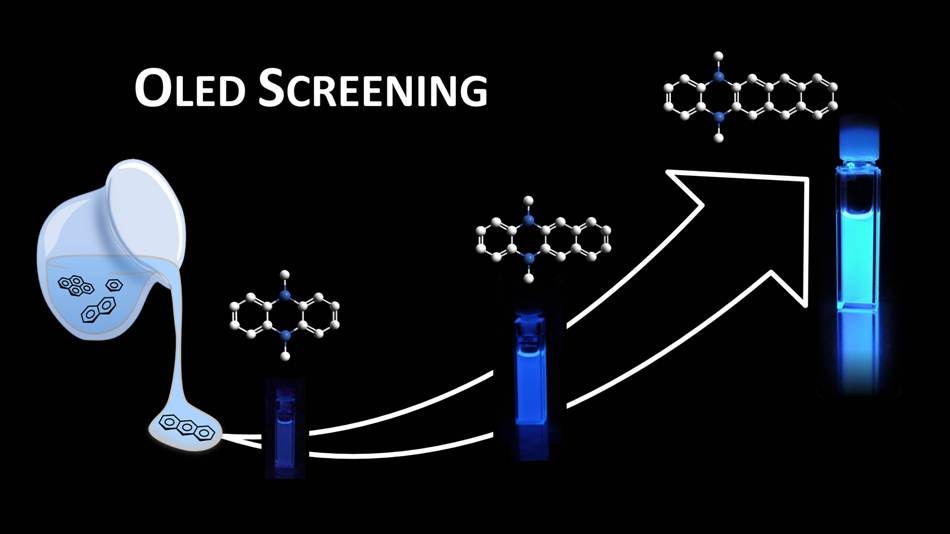Apr 24 2017
 A new screening process means that promising OLED lighting materials can be identified more efficiently. (Copyright: AG Matthias Wagner)
A new screening process means that promising OLED lighting materials can be identified more efficiently. (Copyright: AG Matthias Wagner)
Organic light-emitting diodes (OLEDs) are potential components for flexible flat displays. A screening process created by chemists at Goethe University Frankfurt enables quick identification of lead structures with excellent luminescence and charge-transport properties.
The growing demand for progressively advanced tablets, smartphones, and home cinemas is an increasing challenge for display technology. Right now, organic materials are the most effective means to meet this challenge. Molecules from the group of materials called as polycyclic aromatic hydrocarbons (PAHs) can be particularly used to create large and mechanically flexible flat screens. They combine brilliant colors with high resolution and are also low in energy consumption.
The chemists at Goethe University Frankfurt are presently investigating new types of organic luminescent materials which owe their promising properties to the addition of boron atoms into the PAH scaffold. So far, the syntheses needed have been very complex and time-consuming. A newly developed screening process, which makes a broad range of boron-doped PAHs rapidly and easily accessible, could in the future improve this situation. The method makes it possible to assess their potential as OLED materials. In the next stage, just the most promising candidates will be studied more extensively.
As the research team led by Professor Matthias Wagner at the Institute of Inorganic and Analytical Chemistry of Goethe University Frankfurt reports in the scientific journal “Angewandte Chemie”, the technique is based on a three-component reaction: Two components stay unaffected in all reactions while the third is selected from a wide range of inexpensively available PAHs. The reactive boron-containing starting material plays a significant role in the assembly of the molecular scaffold. Moreover, it provides the compounds obtained the anticipated optoelectronic properties by improving the materials’ electrical conductivity and by increasing luminescence.
For a long time, it has mostly been pharmaceutical research which has profited from screening processes. Yet it makes sense precisely in the dynamic and growing field of organic materials to use similar strategies to achieve results in a cost-efficient and resource-friendly way.
Alexandra John, Doctoral Researcher, Goethe University Frankfurt
Professor Matthias Wagner adds: “Our development’s market relevance can also be seen by the fact that the Federal Ministry for Economic Affairs and Energy is giving our research work generous financial support.” The funding instrument behind it - WIPANO - assists the transfer of knowledge and technology via patents and norms, and aims to safeguard the commercial exploitation of groundbreaking ideas and inventions created by public-funded research by protecting and utilizing intellectual property. Wagner and John have already filed a patent for their method.